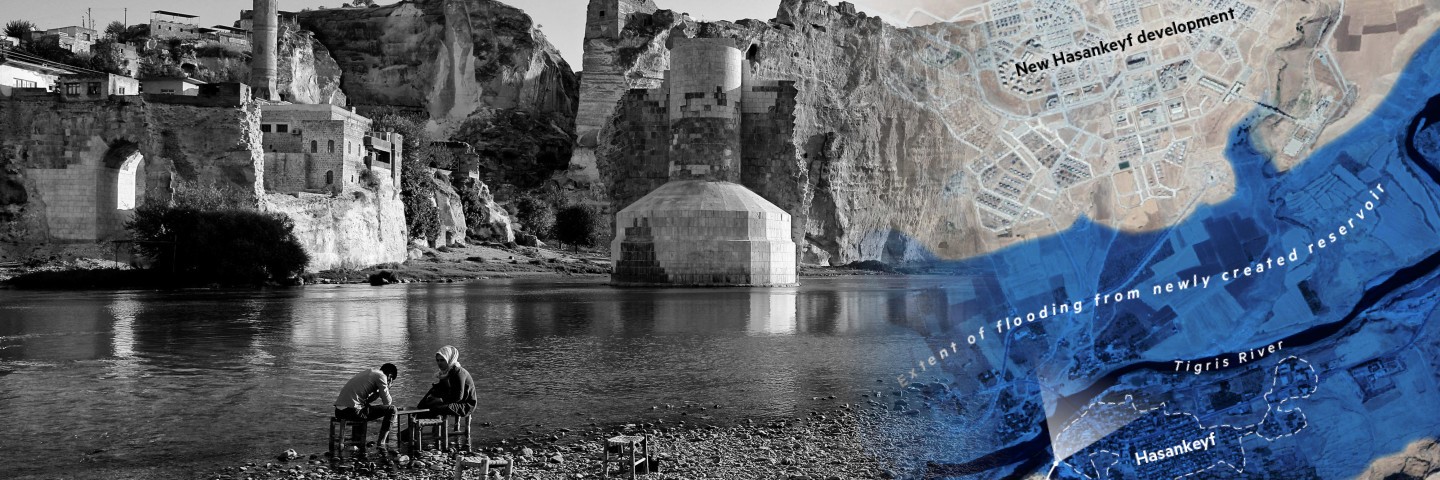They are from different generations, different countries, and live 1,100km apart. Yet the fates of Suleyman Agalday and Nashwa Nasr are intertwined by policies transforming the Tigris River that has irrigated their societies for centuries.
Today, both are threatened with displacement. In south-east Turkey, Mr Agalday, 39, will see the ancient caves and rock formations of his hometown, Hasankeyf, flooded as the waters slowly rise because of his government’s controversial Ilisu dam. Engineers are due to start filling the reservoir this month. In the months ahead, homes, gardens and thousands of years of history will be submerged.
But the flooding of Mr Agalday’s home also threatens critical shortages for Ms Nasr’s southern Iraqi marshlands, which have long received the waters of Mesopotamia’s two great rivers, the Tigris and Euphrates, as they flowed down from the Turkish highlands. Like her ancestors, Ms Nasr raises water buffalo among the towering reeds. As a child, the waters were so high, she could lean out of her thatched house and scoop up water to drink.
Now, even if the leathery 78-year-old could reach the water from her hut, it is too polluted to drink. Every day, she and her family agonize over whether to leave their home behind. “Everyone talks about migration, but where to?” she says. “All we know is raising buffalo. How would we survive? We’re looking for mercy from God. Here, water is mercy — and there is less and less of it.”
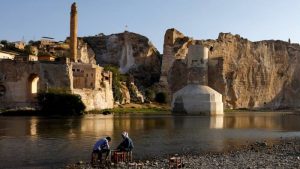
The damming of the Tigris is a cultural tragedy, activists say, with potentially profound geopolitical repercussions. Compounded by climate change, it risks sparking displacement that could further destabilize both countries, their neighbours and, potentially, boost migration when Europe is desperately trying to curb the flow of new arrivals.
Turkey says its decades-long project to build 22 dams — the ambitious target date for completion is the end of next year— along the Tigris and the Euphrates will produce energy and jobs. But the Southeastern Anatolia Project, known by its Turkish initials GAP, has become entwined in the bitter internal tensions between the Turkish state, the country’s Kurdish minority and a violent insurgency led by the Kurdistan Workers’ party, or PKK.
Security experts increasingly argue that resource shortages disrupt communities and create militant recruiting grounds. Having militarily defeated Isis this year, Iraq says maintaining supremacy against the Islamist group depends on providing the country with a brighter future. Water is critical to that: over 80 per cent of Iraq’s water goes to agriculture, which provides a livelihood to more than a third of its 37m population.
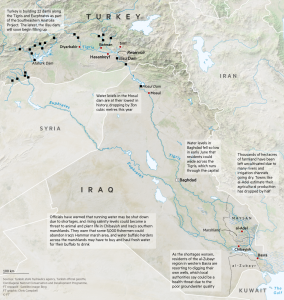
Even before the filling of Ilisu, Iraq’s water ministry reported that inflows had this year dropped 40 per cent below the median. Panic swept the country at the start of June as water levels fell so low that people could wade across the Tigris in Baghdad. Ministers limited the planting of rice and other water-intensive crops to minimize the damage.
Researchers estimate that Middle East temperatures are rising twice as fast as the world average, due to the amplifying effect of desert conditions, which could make swaths of the region uninhabitable by the end of the century.
With the Euphrates extensively dammed by neighbouring Syria and Turkey, and Baghdad grappling with decades of its own water mismanagement, the Tigris’s flows are critical.
“By minimize will have lost 11bn cubic metres of water,”says Jassim al-Asadi, an environmentalist at Nature Iraq — a decline that will make it even harder to meet the projected annual demand of 71bn cubic metres by that date. As temperatures rise, the dams’ impact will be worsened by diminishing snowfalls at the source of the Tigris and higher evaporation rates. “The future of water in Iraq is very, very dim.”
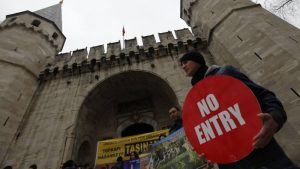
(A protest against Ilisu Dam in Istanbul in 2012)
In Baghdad, officials and diplomats are grappling with the aftermath of the fall of Isis, and an increasingly dangerous proxy struggle between Baghdad’s rival patrons, Washington and Tehran. Dealing with Turkey and climate change, they argue, can be solved at a later date.
But in southern Iraq, locals say time is running out.
If Ms Nasr’s marshlands feel strained, the neighbouring agricultural regions of Maysan province are parched. As offshoots of the Tigris dwindled, some 650 villages went dry for days this spring. Among them, the town of al-Adel, where farmers describe the hottest spring they can recall — and the driest in 30 years. They expect to harvest only half of their usual annual crop.
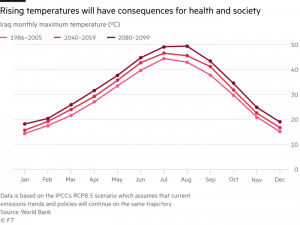
“First we had an exodus from rural areas to town centres,” says Mr Fartousi describing the impact of the shortages in recent years. “But if the towns are in this situation — then where do you go?” Other frustrations lurk beneath the surface: southerners served in vast numbers for the volunteer Popular Mobilisation Forces, or PMF, that fought and died defeating Isis. Many are now returning to a devastated countryside, or simply do not come home at all — preferring to stay in the militias many Iraqis fear could become a parallel force threatening the state. Further downstream, in the village of al-Kheir, mayor Hussein al-Yassin has been forced to call in the security forces to break up gun battles over water. Now, he holds court with local sheikhs, discussing something they hoped to never face again: displacement.
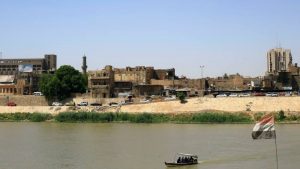
They were one of many communities forced to flee in the 1990s, when Saddam Hussein diverted rivers to dry out the marshes and root out opponents hiding there. After he was toppled in the 2003 US invasion, locals broke down the barriers, and the rivers flowed again. But dam building, low rainfall and harmful irrigation practices mean that marshes historically 15,000 sq km wide now reach only some 5,000 sq km and are likely to shrink further.
Village elders are unsure how to advise people steeped in agriculture for generations who may have no option but to head to the expanding slums of Iraq’s major cities — places known to be recruiting grounds for militants.
“Our people are afraid in a way others don’t understand,” Mr Yassin says. “How can they make a living in the city? They can’t raise buffalo there, they can’t farm, and they certainly cannot fish.”
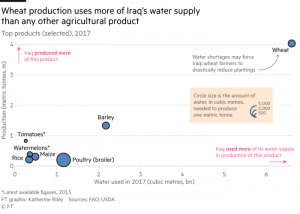
More than 1,000km north, in a once-sleepy corner of southeastern Turkey, birdsong is punctuated by grinding gears, as workers dismantle Hasankeyf. Last year, they moved a 15th-century monument a mile away to higher ground. Now, workers blow up rock formations and serve eviction notices to businesses. No one knows when the valley will be flooded, but many are dreading it.
“I’ve lived here all my life,” says Mr Agalday, who sells tea to tourists in a small café overlooking the town. “My grandmother lived in that cave up there.” In the distance are the grey concrete blocks of “New Hasankeyf”, a replacement settlement of 700 homes for those expelled. In theory, one of them is a house for Mr Agalday. But he insists he is not going to live there.
Leaning back in a plastic chair, he closes his eyes and struggles to conjure up an image of life across the valley. “I try to imagine my children coming back from school and playing,” he says. “But I can’t stay there in my mind. I keep coming back to Old Hasankeyf.”
Officials argue that the GAP project will not only ensure that a quarter of Turkey’s energy comes from hydropower. They also say it will narrow the wealth gap between the south-east, long Turkey’s poorest region, and the rest of the country by massively expanding the amount of irrigated land and creating thousands of jobs.
Yet Turkey’s grand dam-building ambition has been sucked into the country’s Kurdish conflict. In the 1980s, the decision to build the huge Ataturk dam was seen as a spur for Syria’s decision to start backing the PKK, which continues to wage a violent campaign against the Turkish state.
Today officials hope that by boosting development in the south-east support for the group will wane. But Kurdish campaigners say the environmental, cultural and social damage caused by the Ilisu dam will exacerbate, rather than heal, the root causes of the conflict.
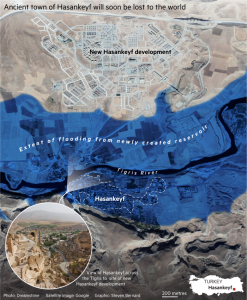
Some claim that the government’s primary aim in building the dams is to crush Kurdish political aspirations. “They want to force people to leave the rural areas and go to the cities,” says Ridvan Ayhan, local chairman of the Peoples’ Democratic party, or HDP, a Kurdish-dominated opposition group. “Politically active people will be forced from their land.”
Even pro-government media explicitly cast the Ilisu dam as part of the struggle against the PKK, claiming that flooding the river valleys will disrupt the group’s movements. Residents and activists concede the dams may succeed in doing so. But in the long term they say it will fuel the anger that feeds the Kurdish political movement — and support for the PKK.
Uprooting people and flooding their land, says Talat Cetinkaya, an anti-dam campaigner, will perpetuate a cycle of displacement and disillusionment: “It will create a new underclass,” he says.
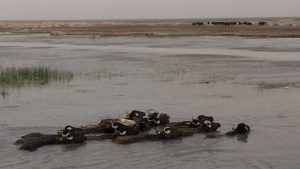
When the Ataturk dam opened in 1992 it sparked diplomatic tensions. Suleyman Demirel, then president, inflamed them by warning the country’s neighbours that if they could exploit their oil resources, Turkey had similar rights to the water springing from its territory.
Today, officials strike a more conciliatory tone, insisting their aim is to ensure that water is shared across the region in an “equitable, reasonable and optimal manner”.
But the Iraqi water minister, Hassan al-Janabi, accuses Ankara of using water as a commodity that can be bargained with. Iraq, he says, will remain vulnerable as long as there is no shared interpretation of international water law.
Last month, the two countries negotiated the latest in a series of delays to the filling of Ilisu. Mr Janabi told Iraq’s al-Sumaria TV that they had reached a “fair” agreement that Turkey would release 75 per cent of the river’s volume while keeping the rest to gradually fill the dam over the coming months.
Yet it remains unclear how much water the GAP dams will take for agriculture. And his ability to negotiate has been severely undermined by the unrest and war that has overwhelmed his country since 2003. He says: “Iraq has been made a very weak country.”
It is not just Turkey but Iran that is depleting the Tigris. Dams along dozens of tributaries have cut more than half the water that flowed to Iraq compared to 20 years ago, Iraqi officials say.

Yet Dursun Yildiz, a former Turkish water official now heading the Ankara-based Hydropolitics Academy, argues Turkey’s dams actually benefit its neighbours. Turkey’s cooler temperatures mean water can be stored there, saving downstream countries millions of cubic meters that would evaporate.
“You have to control the water,” Mr Yildiz says. “The time when precipitation occurs is not the same time as when you need the water on the lands. Control shouldn’t be a source of conflict. It’s a solution.”
A 2015 UN report, however, argued that controlling water flows from Turkey had come with “dire consequences”, such as higher salinity levels downstream hitting crop yields and damaging the wider ecosystem. Iraqi environmentalists say salinity levels in Iraq’s marshes, once about 200 parts per million, are now at 1,900 parts per million.
The real solution, both Ankara and Baghdad agree, is modernizing Iraq’s outdated water and agricultural practices: its Sumerian-era irrigation channels must be replaced with drip irrigation. The government could encourage farmers to move to new crops instead of water-intensive wheat, which can be imported cheaply.
Mr Janabi’s ministry proposed a 20-year project to develop sustainable water practices, at a cost of $184bn. But Iraq, saddled with $71bn of debt and beset by years of low oil prices, cannot afford it. “We need to adapt, but adaptation costs money,” says Mr Janabi. “And that money is not available.”
For many along the Tigris, adaptation is not even an option. In Hasankeyf, Mr Agalday awaits the day that he is forced to leave the town — and wonders if his grandmother’s cave will be submerged along with the rest of the lush valley.
In sweltering Chibayish, Ms Nasr and her stepsons debate whether to follow some of their neighbours, who fled towards Iran’s marshlands seeking a head start against drought. “We won’t survive in a city,” says her stepson Ahmed. “The marshes are our life.”
Source: ft
Ask me anything
Explore related questions
